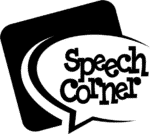Navigating Behavior Challenges in Speech Pathology: Effective Intervention Strategies
Happy New Year! Today, we delve into a crucial aspect of our profession – managing behavior challenges during therapy sessions. Addressing behavior issues is integral to fostering a positive and productive therapeutic environment. Let’s explore some effective behavior intervention strategies tailored for speech pathologists.
- Build a Connection:
Establishing a strong rapport with your clients is the foundation of successful therapy. Take time to understand their interests, preferences, and communication styles. By building a connection, you create a trusting relationship that can significantly impact their behavior during sessions. - Clear Communication:
Communication is key in any therapeutic setting. Use clear and concise language, and be mindful of your tone and body language. Ensure that instructions and expectations are easily understandable, providing a framework for positive behavior. - Visual Supports:
Implement visual aids to enhance understanding and engagement. Visual schedules, charts, and cues can help individuals with speech and language challenges comprehend expectations and transitions. These tools offer a visual structure that can minimize anxiety and support better behavior. - Reward Systems:
Positive reinforcement can be a powerful motivator. Establish a simple reward system to acknowledge and celebrate small achievements. This could include verbal praise, stickers, or a token system leading to a larger reward. Tailor the rewards to each individual’s preferences for maximum effectiveness. - Modify the Environment:
Pay attention to the physical environment. Minimize distractions, create a comfortable and inviting space, and ensure that materials are easily accessible. A well-organized and engaging environment can contribute to a positive behavior atmosphere. - Collaborate with Other Professionals:
Work closely with other professionals involved in the individual’s care, such as teachers, parents, or occupational therapists. Collaborative efforts allow for a comprehensive approach to behavior intervention, ensuring consistency across different settings. - Implement Structured Sessions:
Structure provides predictability, which can be reassuring for individuals with behavior challenges. Plan your sessions with a clear beginning, middle, and end, incorporating routines and transitions. Clearly communicate the session agenda to set expectations. - Incorporate Choice:
Offer choices within the session whenever possible. Providing individuals with a sense of control can empower them and reduce resistance. Simple choices related to activities, materials, or order of tasks can make a significant difference.
As speech pathologists, you play a vital role in supporting individuals with communication challenges. By employing these behavior intervention strategies, you can create a positive and effective therapeutic environment. Remember, every individual is unique, so adapt these strategies to suit the specific needs and preferences of your clients. Together, let’s continue making a difference in the lives of those we serve!
